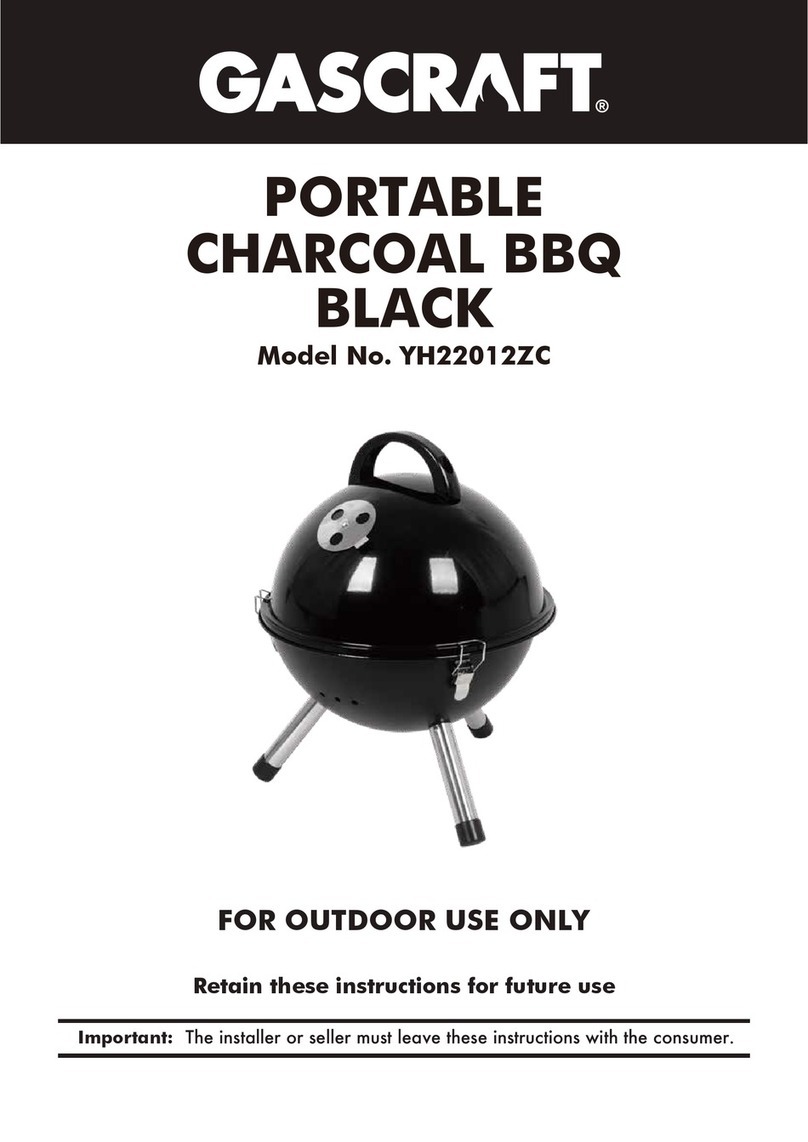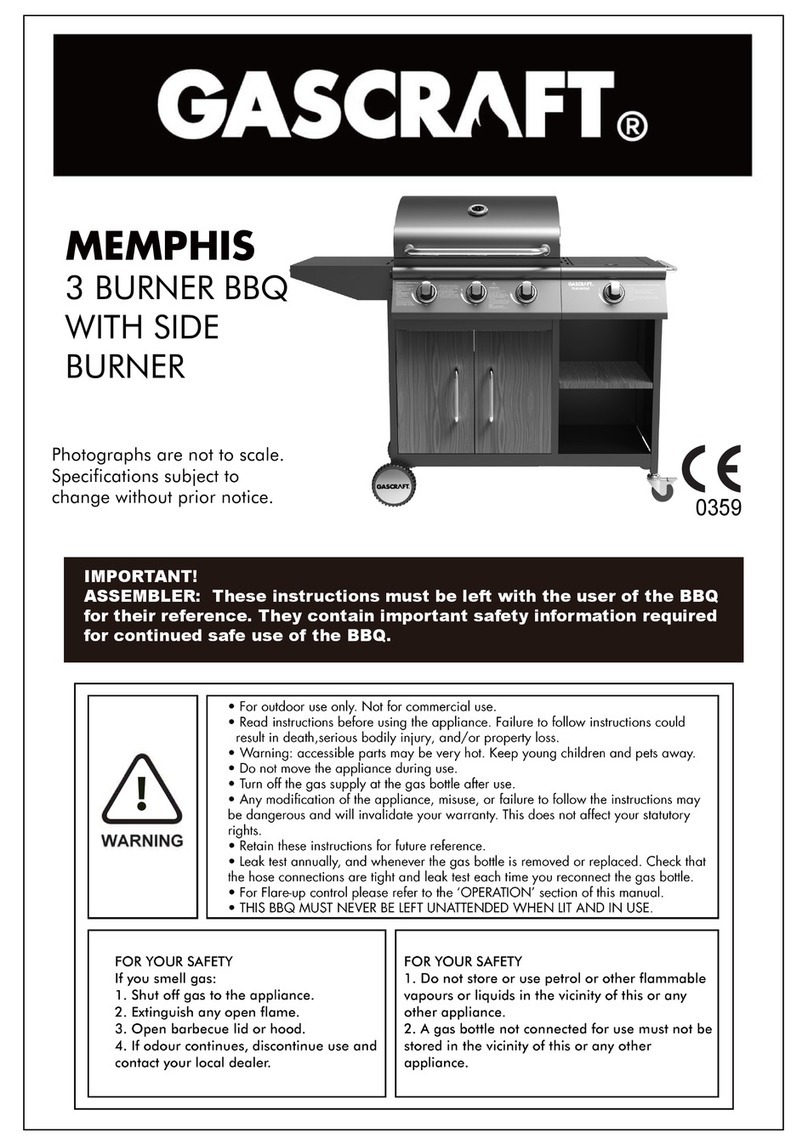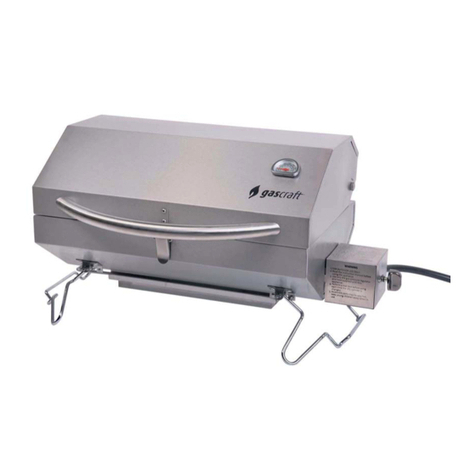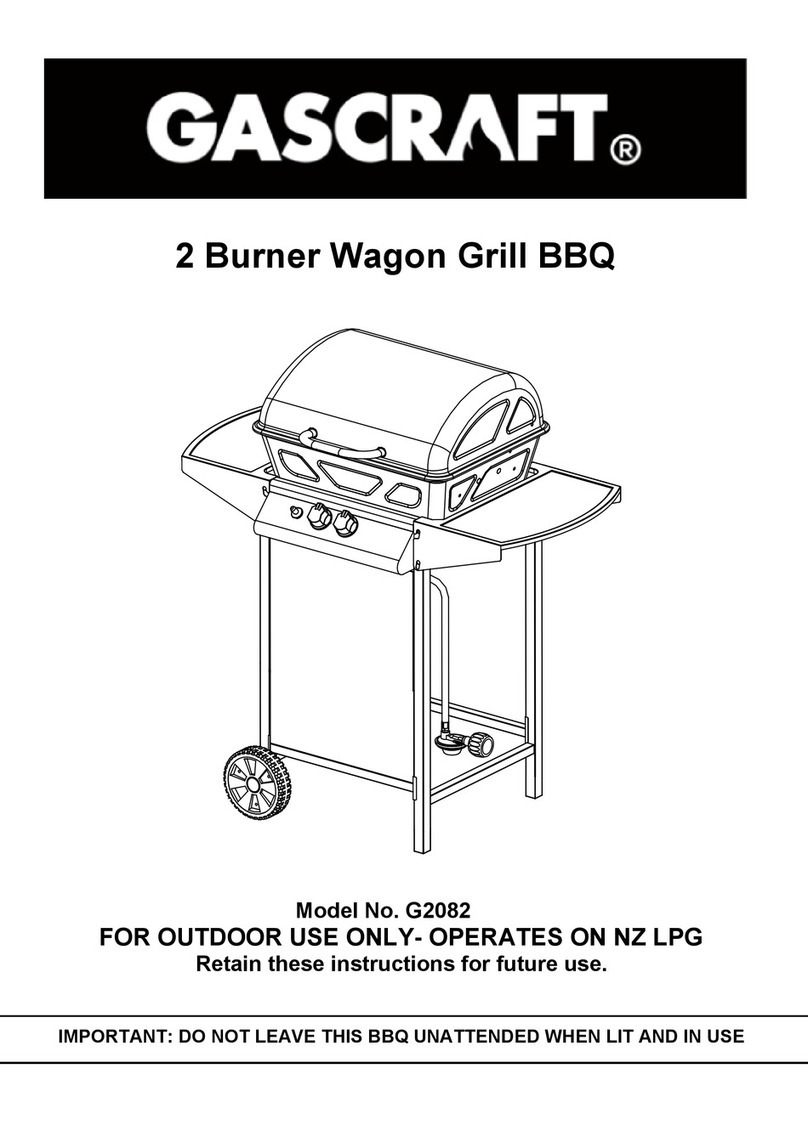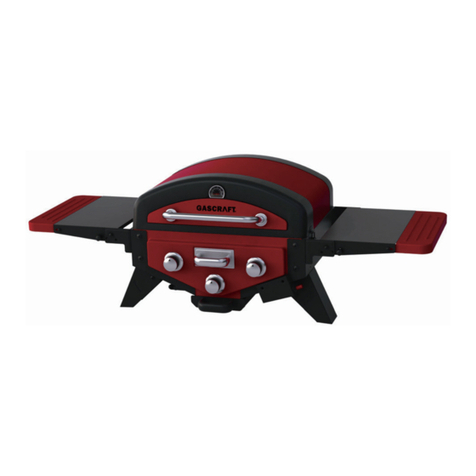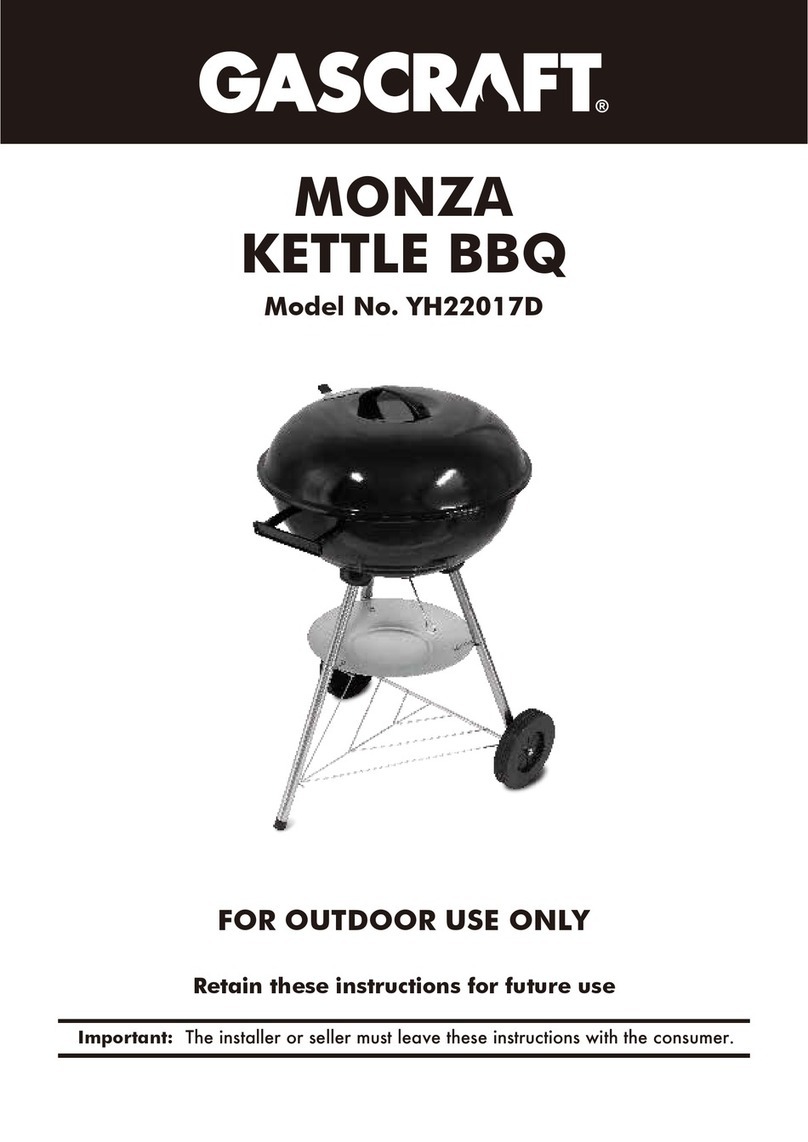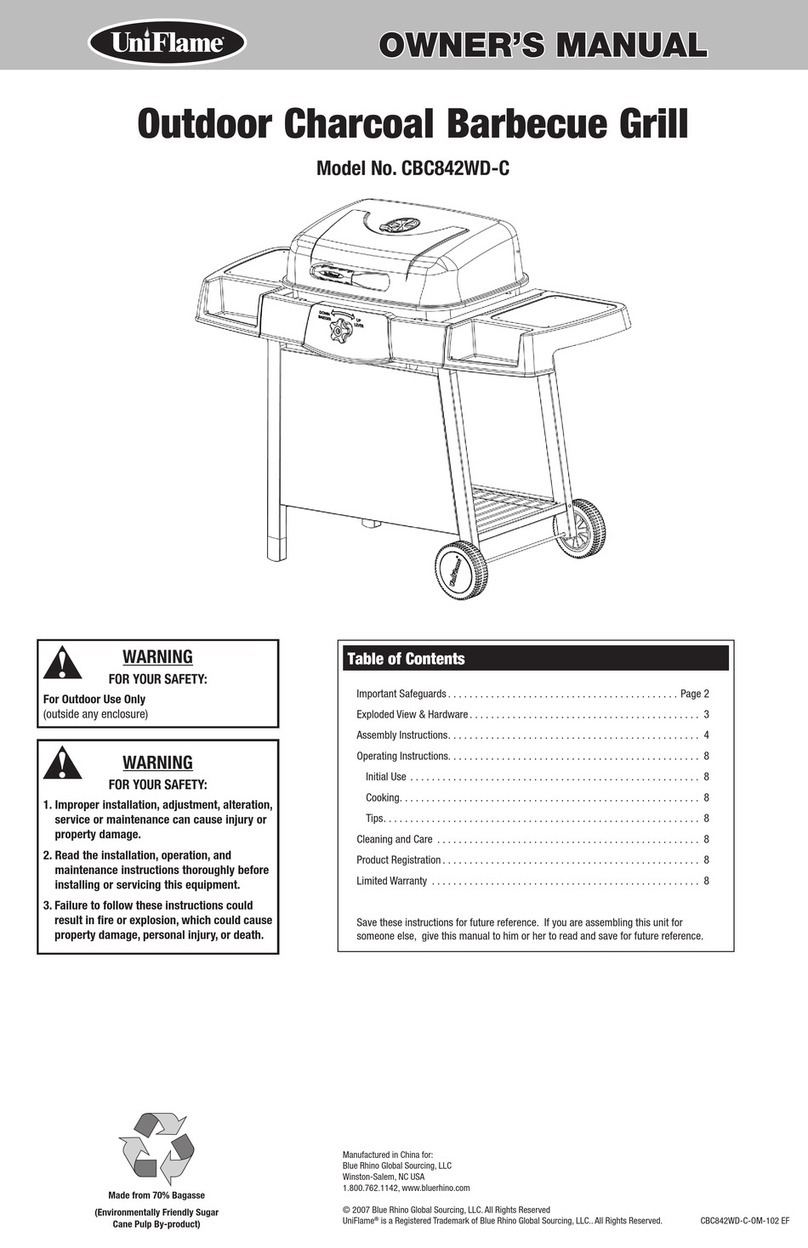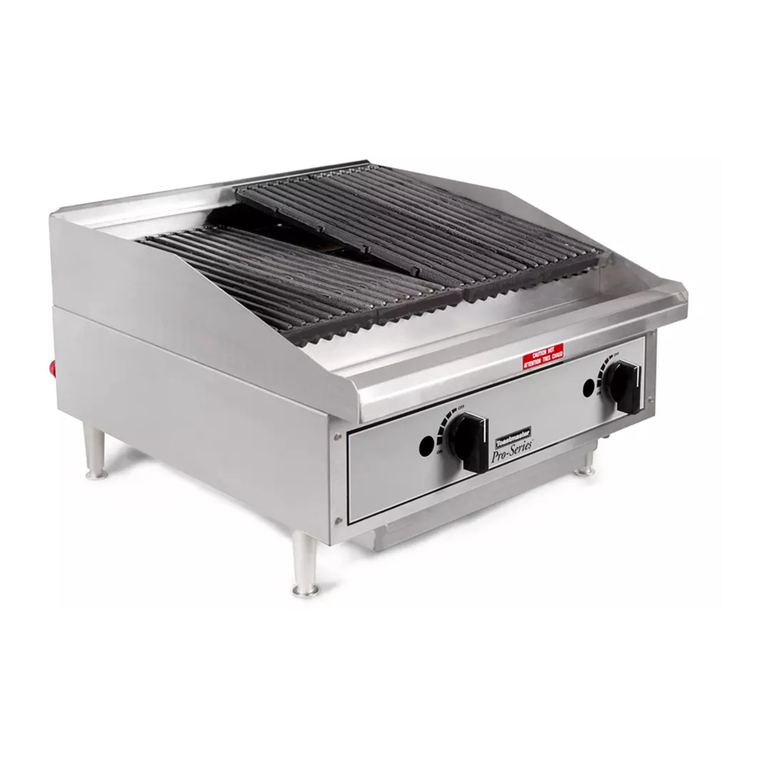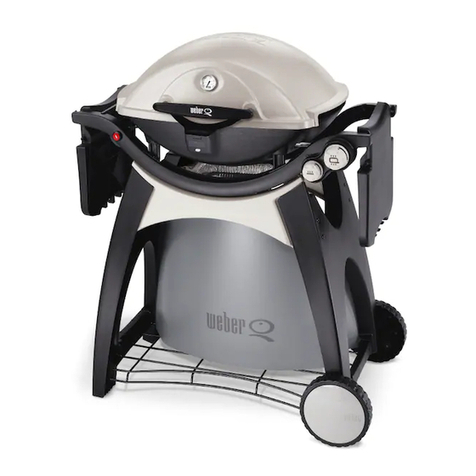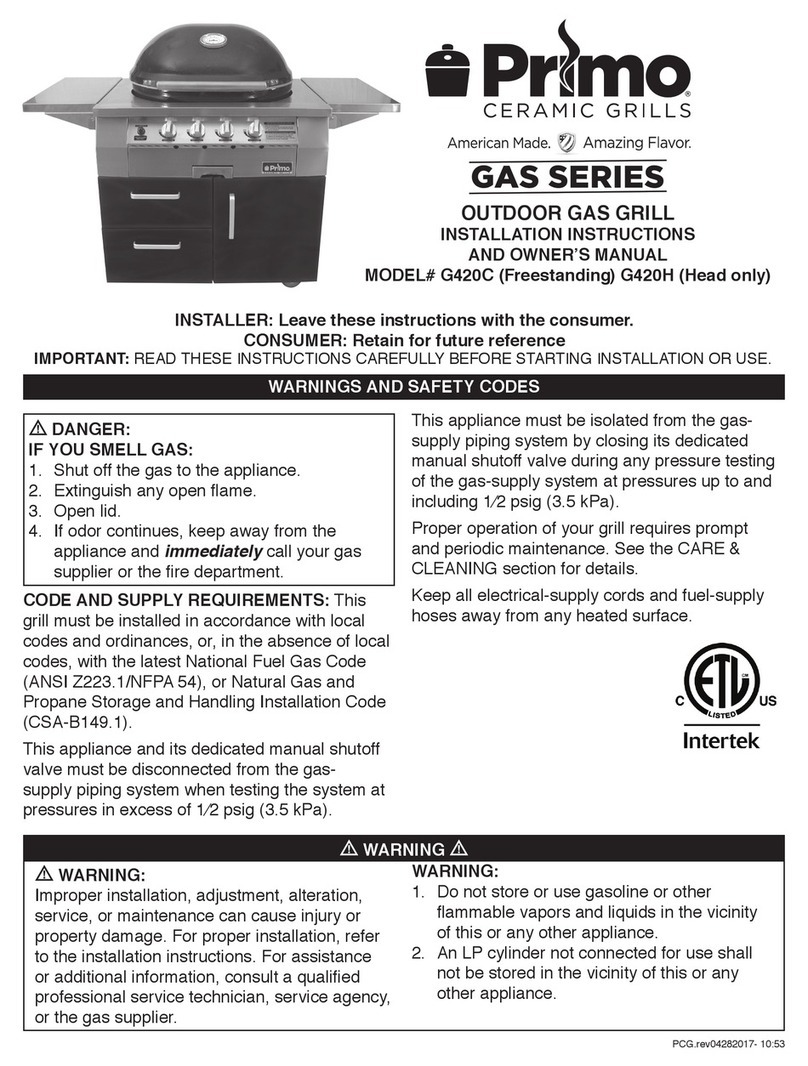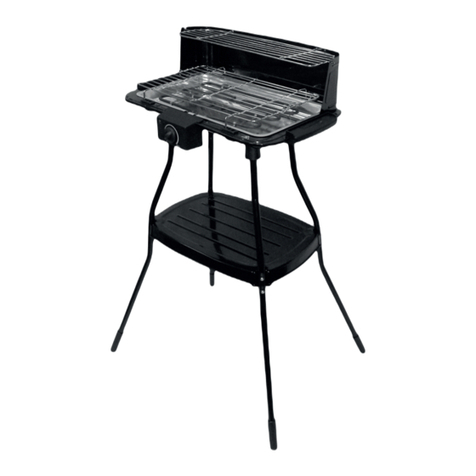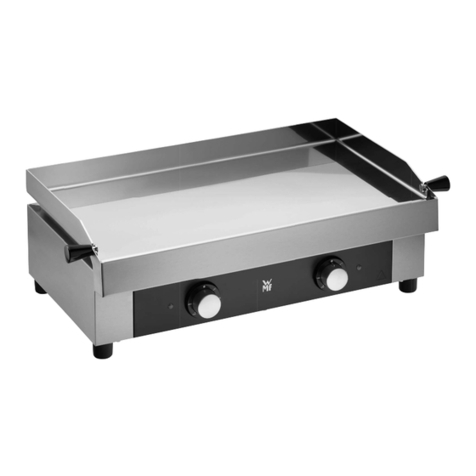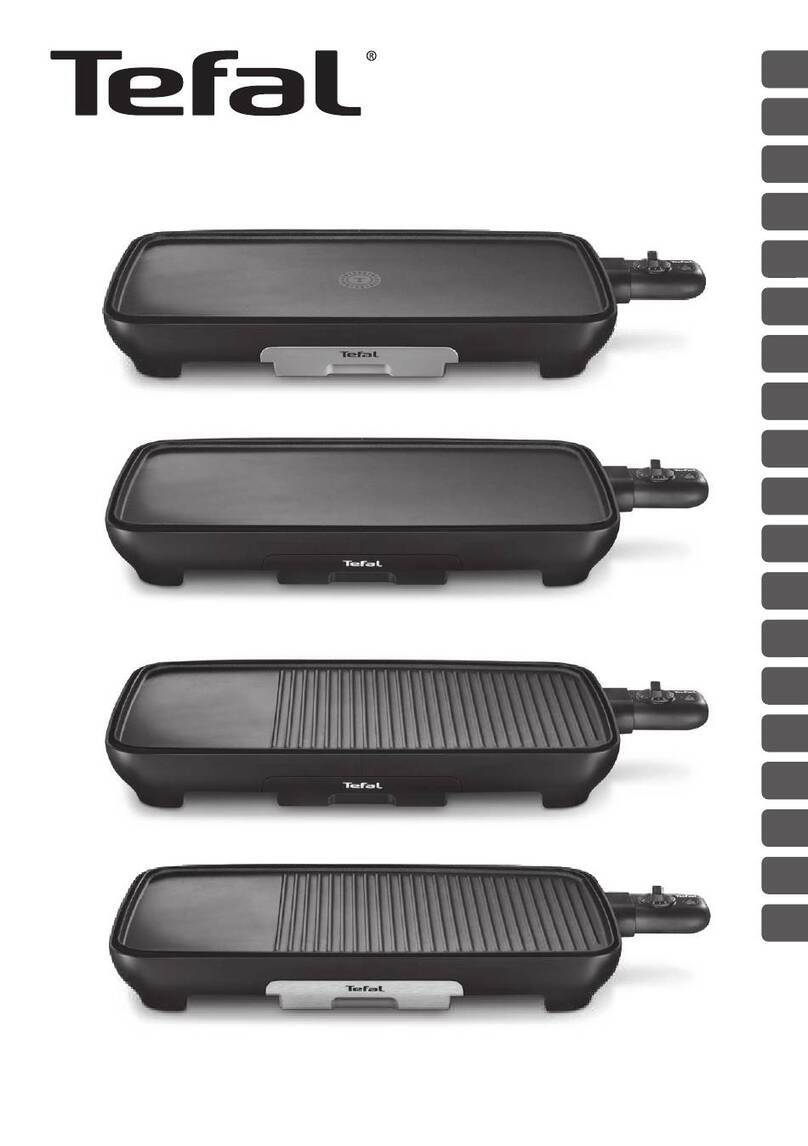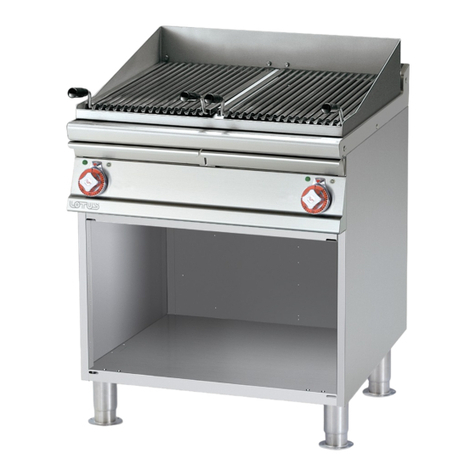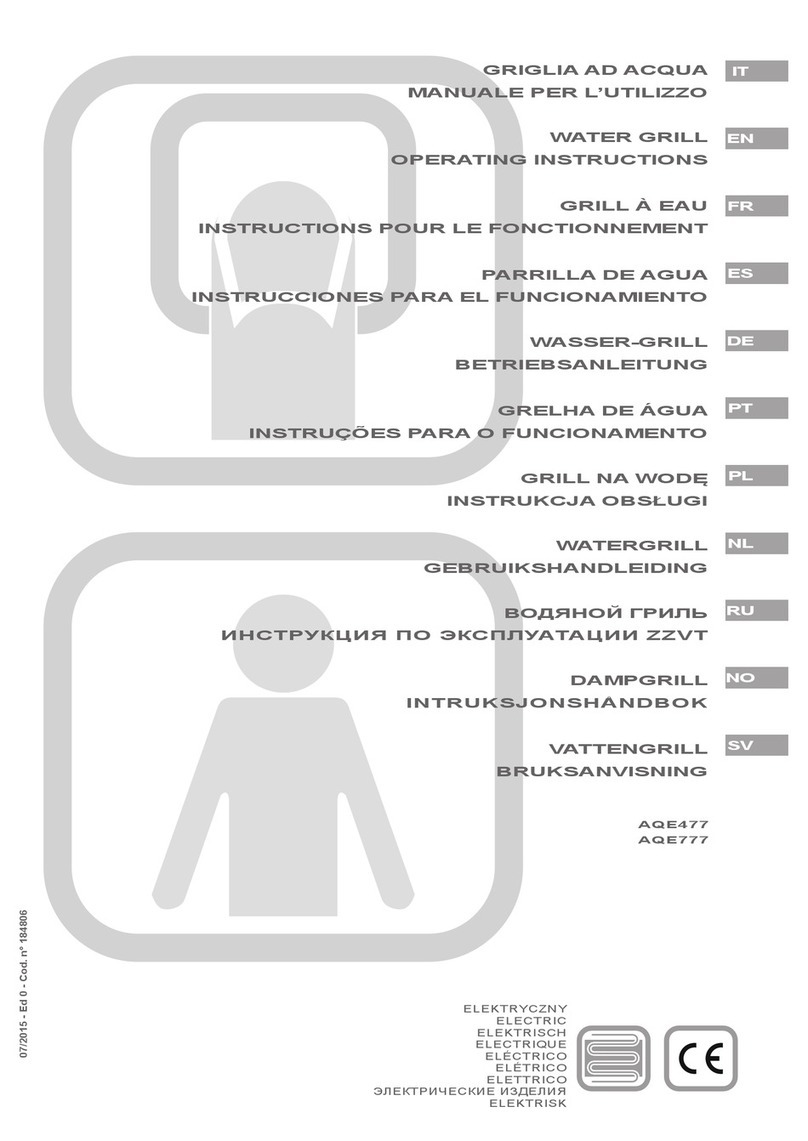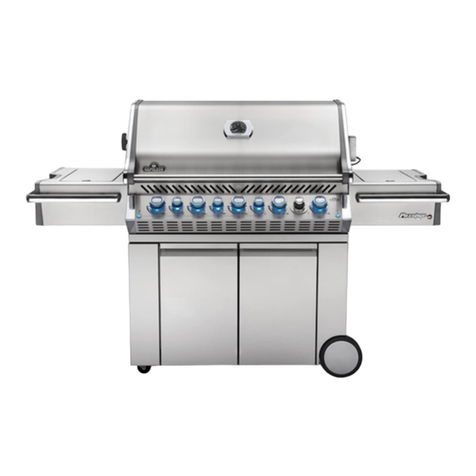
•If using the hose assembly accessory connected to a
9kg LPG cylinder, now open the gas control valve on the
cylinder slowly and smoothly to ensure full gas flow.
•Take away the cooking ware and flame tamer, hold lit
match on the burner
•Turn the regulator control knob anti-clockwise from
LOCK to OFF position to unlock the button.
•Turn the regulator clockwise to MED position. The
burner should light within 5 seconds
Grill Cooking
The burner heats up the flame tamer underneath the grill,
which in turn heat the food on the grill. The natural food
juices produced during cooking fall onto the hot flame tamer
below and vaporise. The subsequent rising smoke bastes
the food, as it travels upwards, imparting that unique
barbecued flavour.
Plate Cooking
The burner heats the plate directly, which then cooks the
food on contact. Plates allow for the cooking of smaller items,
such as seafood, which could fall through the spaces of a
grill. They are also suitable for cooking items that require
high-temperature / short-duration cooking, such as
vegetables and smaller cuts of fish. Similarly, it can be used
in exactly the same way as a griddle in the kitchen, for
searing steaks, cooking eggs, etc. Alternatively, it can be
used for heating pans or keeping food warm.
Roasting Hood Cooking
Barbecues equipped with a roasting hood give the option to
form an ‘oven’ for roasting or baking food, such as joints of
meat or whole chickens, etc. More even cooking of food will
actually be achieved by using the barbeque with the hood
down. However, this should only be done with the
burner on low.
For best results, place the food you wish to bake or roast on
a metal baking tray and set it on one side of the cooking grill.
Close the hood to cook the food. Avoid lifting the hood
unnecessarily as heat is lost every time the hood is opened.
If the hood is opened during cooking please allow extra time
for the barbeque to regain its temperature and complete the
cooking.
If the internal heat becomes too high, turn the burner down
to the low position. It is not necessary or advisable to have
the burner on high when the hood is closed.
DO NOT ALLOW YOUR BARBECUE TO OVERHEAT.
Take care when opening the hood as steam can be released
on opening.
Flare-Up Control VERY IMPORTANT NOTICE
Flare-ups occur when meat is barbecued, and its fat and
juices fall upon the hot flame tamer. Smoke of course helps
give food its barbecued flavour, but it is best to avoid
excessive flare-up to prevent food being burned. To control
flare-ups, it is ABSOLUTELY ESSENTIAL to trim away
excess fat from meat and poultry before grilling, use cooking
sauces and marinades sparingly and try to avoid very cheap
cuts of meat or meat products as these tend to have a high
fat and water content. Also, the burner should always be
placed on the low setting during cooking.
When flare-ups do occur, they can usually be extinguished
by applying baking soda or salt directly onto the flame tamer.
Always protect your hands when handling anything near the
cooking surface of the barbecue and take care to protect
yourself from the flames.
If a fat fire occurs, please see the instructions given below.
Fat Fires
Empty and clean the fire bowl and grease box of food debris
after each cooking session. If the barbecue is to be used for
large gatherings, it will be necessary to turn off and cool the
barbecue every two hours to remove food debris from the fire
bowl and grease box and clean it out. The time between
cleaning may need to be reduced if very fatty foods or cheap
meat products are being cooked. Failure to do this may
result in a fat fire, which may cause injury and could
seriously damage the barbecue.
In the event of a fat fire:
•If safe to do so, turn the control knob OFF.
•Turn off the gas supply at the gas bottle.
•Keep everyone at a safe distance from the
•barbecue and wait until the fire has burnt out.
•Do not close the hood or lid of the barbecue.
•NEVER DOUSE A BARBECUE WITH WATER.
•IF AN EXTINGUISHER IS USED, IT SHOULD
•BE A POWDER TYPE.
•DO NOT REMOVE THE DRIP TRAY.
•If the fire does not seem to be abating or
•appears to be worsening, contact your local
•Fire Brigade for assistance.
End of Cooking Session
After each cooking session, turn the barbecue burners to
the “high” position and burn for 5 minutes. This procedure
will burn off cooking residue, thus making cleaning easier.
Make sure the hood or lid is open during this process.
Turning Off Your Barbecue
When you have finished using your barbecue, clockwise
turn the regulator button to “OFF” position then turn to
“LOCK” position.
Wait until the barbecue is sufficiently cool before closing its
hood or lid.
Care and Maintenance
Regularly clean your barbecue between uses and especially
after extended periods of storage. Ensure the barbecue
and its components are sufficiently cool before cleaning. Do
not leave the barbecue exposed to outside weather
conditions or stored in damp, moist areas.
Never handle hot parts with unprotected hands.
Never douse the barbecue with water when any of the
surfaces are hot.
In order to extend the life and maintain the condition of your
barbecue, we strongly recommend that the unit be covered
when left outside for any length of time, especially during
the winter months. Heavy-duty barbecue covers and other
accessories are available from your local stockist.
Even when your barbecue is covered for its protection, it
must be inspected on a regular basis as damp or
condensation can form which may result in damage to the
barbecue. It may be necessary to dry the barbecue and the
inside of the cover. It is possible for mould to grow on any
fat remaining on parts of the barbecue. This should be
cleaned off smooth surfaces with hot soapy water.
Any rust that is found that does not come into contact with
the food should be treated with a rust inhibitor and painted
with barbecue paint or a heat resistant paint.
Cooking Surfaces
When the barbecue has cooled, clean it with hot soapy
water. To remove any food residue, use a mild cream
cleaner on a non-abrasive pad. Do not use scouring pads or

























